Snake plants (Sansevieria trifasciata), also known as mother-in-law’s tongue, are celebrated for being some of the easiest houseplants to care for. Their upright, sword-shaped leaves and tolerance for low-light, low-humidity environments make them a favorite for homes, offices, and even bedrooms. However, one question continues to puzzle plant lovers: how often should you water a snake plant?
While these hardy plants are incredibly forgiving, the key to keeping them healthy lies in understanding their watering needs. Watering too frequently or not enough can lead to various issues, including root rot, leaf discoloration, and stunted growth.
In this detailed guide, we’ll uncover everything you need to know about how often to water a snake plant, the factors that influence its watering schedule, and essential tips for keeping your plant vibrant and thriving.
Why Is Watering Important for Snake Plants?
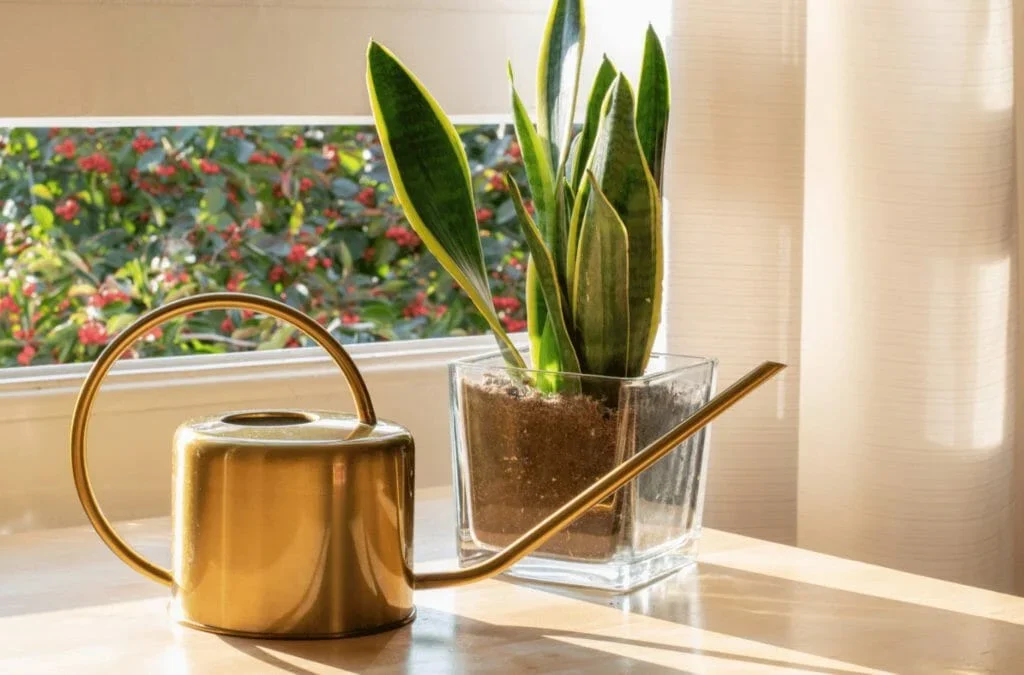
Snake plants are succulent-like species that store water in their thick, fleshy leaves. This makes them drought-tolerant and naturally suited to dry, arid environments. However, while they can survive infrequent watering, both overwatering and severe underwatering can stress the plant.
Proper watering ensures:
- Healthy leaf color and shape.
- Balanced growth.
- Resistance to pests and diseases.
- Long lifespan.
Finding the right watering balance is vital for the long-term health of your snake plant.
How Often Should You Water a Snake Plant?
The watering frequency for a snake plant isn’t one-size-fits-all. It depends on several factors like light, temperature, humidity, pot size, and the time of year.
In Spring and Summer
Water every 2–3 weeks or when the top 2–3 inches of soil feel dry.
This is the plant’s active growing season when it uses more moisture.
In Fall and Winter
Water every 4–6 weeks or when the soil is completely dry.
Growth slows during the cooler months, and the soil retains moisture for longer.
Golden Rule:
Always check the soil before watering.
Snake plants prefer being a little dry over too wet.
Factors That Affect How Often to Water
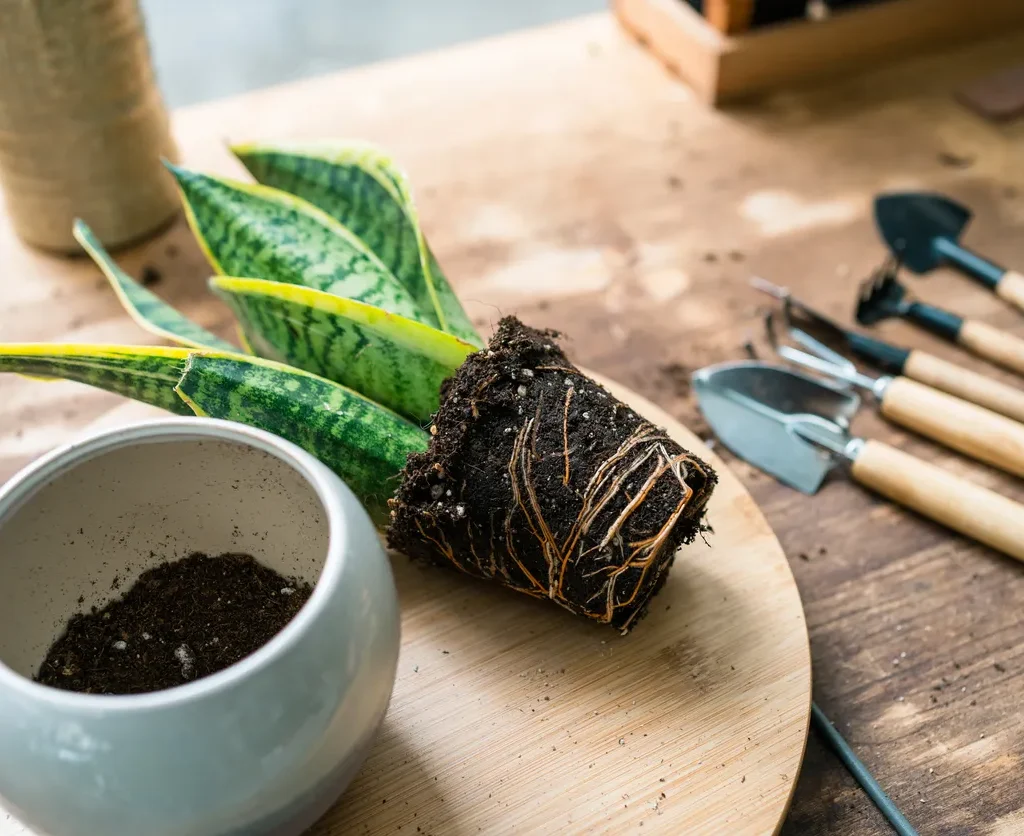
Several variables influence how quickly your snake plant’s soil dries out. Let’s break them down:
Light Exposure
- Bright, indirect light: Soil dries faster; water more often.
- Low light: Soil stays damp longer; water less frequently.
Temperature
- Warm environments (above 24°C / 75°F): Faster evaporation.
- Cool rooms: Slower drying time.
Humidity
Higher humidity levels slow evaporation. In dry, air-conditioned rooms, soil dries out faster.
Pot Size and Type
- Smaller pots dry out quicker than large ones.
- Terracotta pots wick away moisture better than plastic or ceramic pots, reducing the risk of overwatering.
Soil Type
A well-draining cactus or succulent mix dries faster than heavy, moisture-retentive soil.
How to Check When Your Snake Plant Needs Water
Instead of sticking to a rigid watering schedule, the best method is to test the soil moisture.
The Finger Test
Insert your finger about 2–3 inches into the soil:
- If it’s completely dry, it’s time to water.
- If it’s still damp, wait a few more days.
Use a Moisture Meter
For a more accurate reading, a moisture meter is a reliable tool. A reading of 2 or less means it’s safe to water.
Proper Watering Technique for Snake Plants
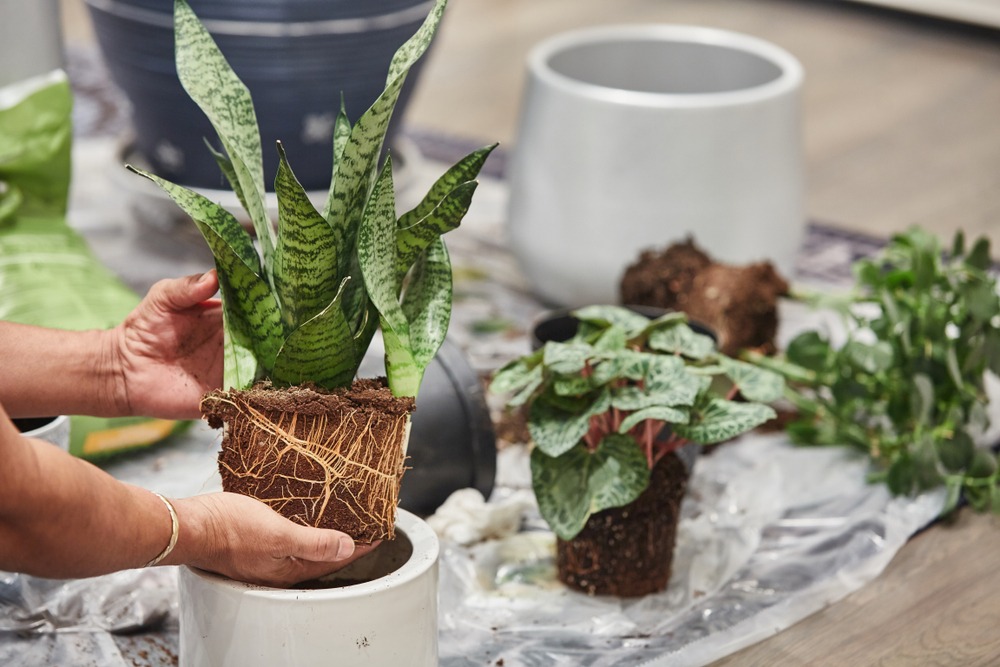
It’s not just about how often you water — it’s also about how you water.
Step-by-Step Watering Guide
- Check the soil moisture.
- Use room-temperature water.
- Water the soil directly at the base — avoid splashing water on the leaves.
- Pour water slowly until it starts draining from the bottom.
- Discard any water collected in the saucer after 10–15 minutes to avoid root rot.
Tip: If your pot doesn’t have drainage holes, be extra cautious with water quantity and frequency.
Signs of Overwatering and Underwatering
Recognizing the signs early helps you adjust your watering routine before lasting damage occurs.
Signs of Overwatering
- Yellow, mushy, or soft leaves.
- Foul-smelling soil.
- Drooping or wilting despite wet soil.
- Root rot upon inspection (dark, mushy roots).
What to Do:
Stop watering immediately, repot in dry, well-draining soil if needed, and let the soil dry out before resuming.
Signs of Underwatering
- Wrinkled, shriveled, or curling leaves.
- Brown, crispy leaf tips and edges.
- Dry, compacted soil pulling away from the pot’s edges.
- Slow or no new growth during the growing season.
What to Do:
Water thoroughly and ensure the plant receives enough light. Avoid overcompensating by watering too frequently afterward.
Seasonal Watering Chart for Snake Plants
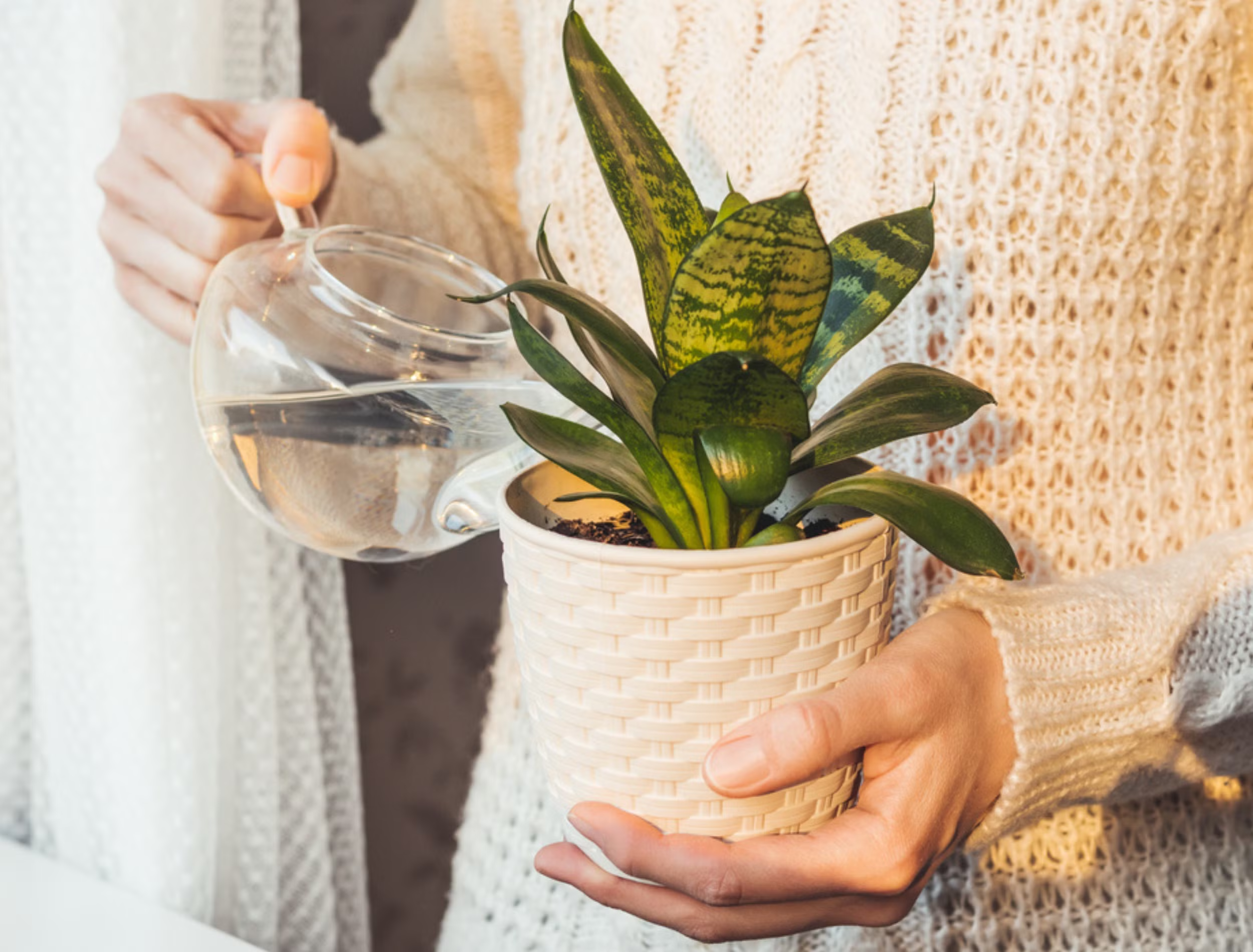
| Season | Watering Frequency | Notes |
|---|---|---|
| Spring | Every 2–3 weeks | Active growth; monitor soil dryness |
| Summer | Every 2–3 weeks | Warmer temperatures = faster drying |
| Fall | Every 4–6 weeks | Growth slows; soil stays moist longer |
| Winter | Every 4–6 weeks or less | Dormant period; minimal water needed |
Common Watering Mistakes to Avoid
Even though snake plants are forgiving, some common watering mistakes can harm them:
Watering on a Strict Schedule
Always check soil moisture before watering instead of following a fixed calendar.
Using Heavy, Dense Soil
Regular potting mixes can retain too much water. Use a succulent/cactus mix for better drainage.
No Drainage Holes
A pot without drainage can lead to standing water and root rot.
Watering the Leaves
Watering over the leaves can cause rot at the leaf base. Always water directly at the soil line.
Expert Tips for Healthy Snake Plant Watering
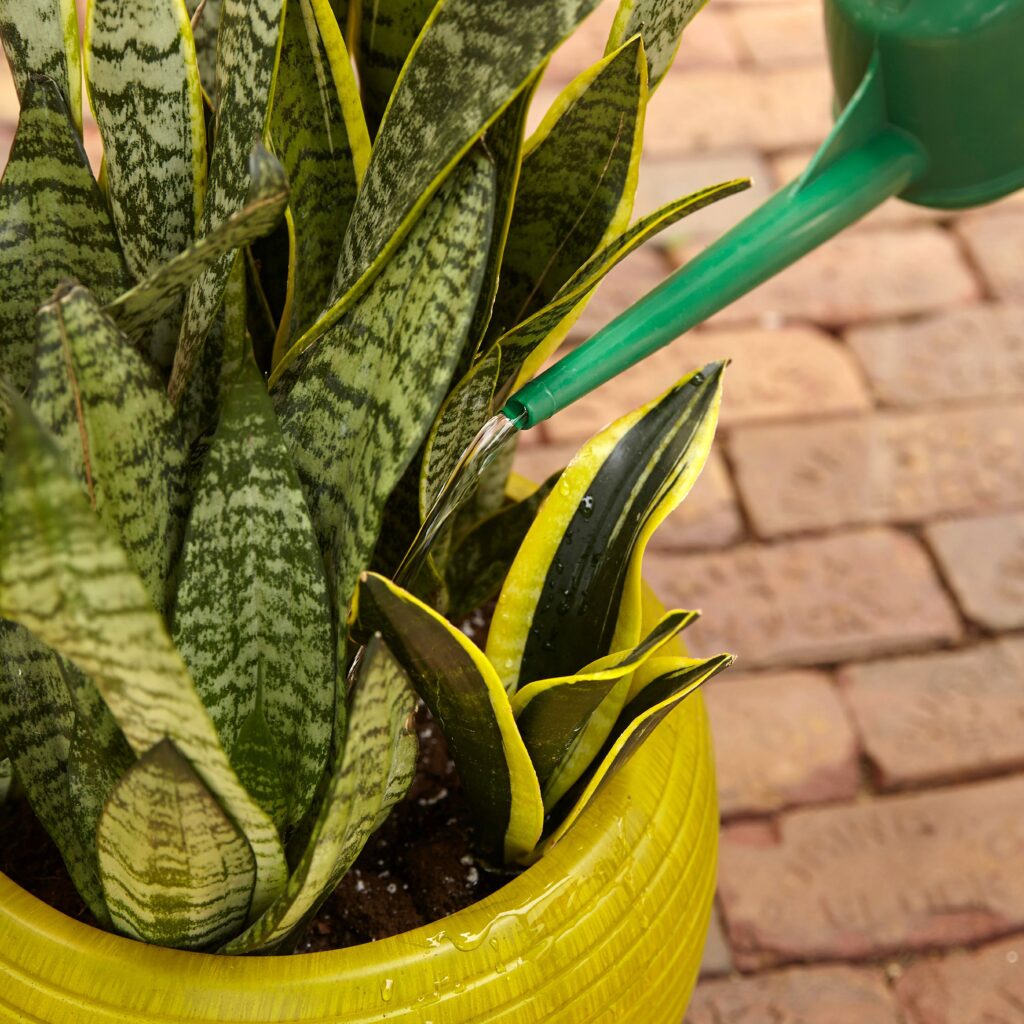
- Use terracotta pots for better moisture evaporation.
- Water less frequently in shaded or low-light areas.
- Avoid self-watering planters for snake plants.
- If unsure, it’s better to underwater than overwater.
- Rotate your plant occasionally to ensure even exposure to light and consistent drying of soil.
Final Thoughts
The beauty of snake plants lies in their resilience, but even the hardiest plants need proper care — especially when it comes to watering. By understanding how often to water your snake plant based on season, environment, and plant condition, you can avoid the common pitfalls of overwatering and underwatering.
Key takeaway:
Check the soil before every watering, adjust based on light and season, and always use well-draining soil and pots with drainage holes.
Master these simple habits, and your snake plant will reward you with strong, upright leaves and cleaner, healthier indoor air for years to come.






Leave A Comment